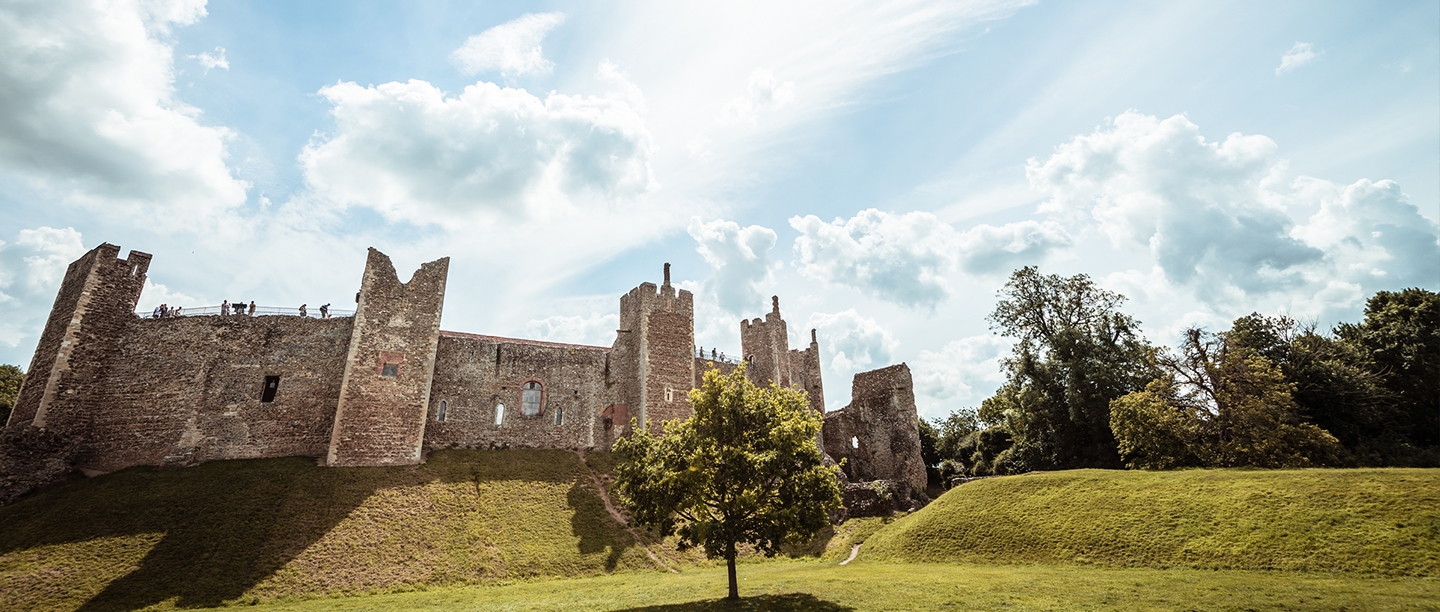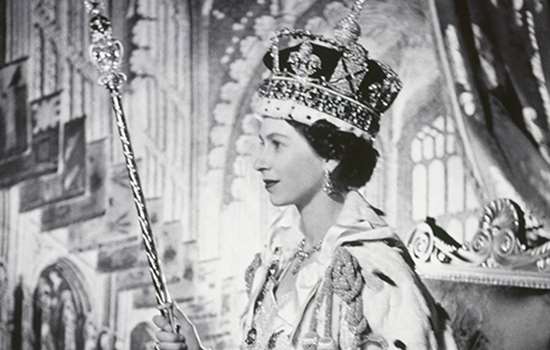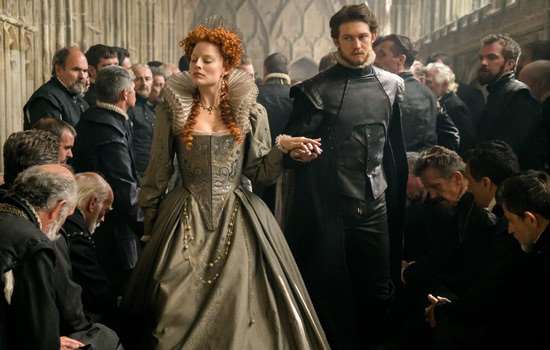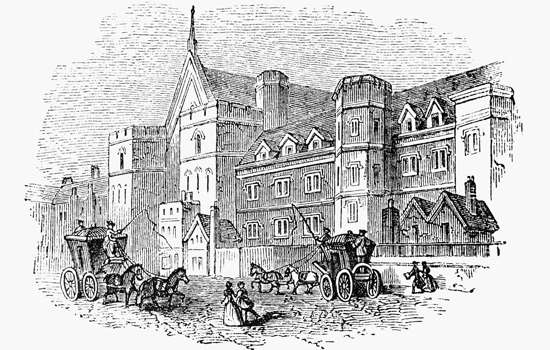
Explore the story of how Mary Tudor became the first to be crowned Queen of England at Framlingham Castle in Suffolk...
A king died in 1553. There were arguments about who would succeed him. A familiar scenario perhaps, but what made it different in 1553 was that the two claimants were both women. In less than 9 days, the radical longstanding question around whether a woman could rule the country by herself was about to be answered.A close up of Queen Mary I by Master John. Oil on panel, 1544 NPG 428 © National Portrait Gallery, London
Did women have the right to rule?
The events of 1553 were not entirely without precedent. There was nothing technically preventing a woman from ruling in England, as opposed to places like France where an ancient tradition known as Salic Law forbade women from inheriting thrones and other property. Henry I made his daughter Matilda heir in 1126. The young widow of the Holy Roman Emperor, Matilda certainly had the pedigree and experience to rule. Henry made his court swear an oath of loyalty to her before his death. However, perhaps inevitably, Matilda’s claim was not recognised by many and instead her cousin Stephen was crowned king. A bitter war fought between the two ended in a stalemate.
Although she controlled large parts of the country during the war, Matilda was never crowned. A brokered truce between the two sides eventually found a compromise – Stephen would remain king, but Matilda’s son Henry would become his heir. A woman could pass on the right to rule to a male offspring, but not rule herself, it seemed.
The scene for the Rout of Winchester, in which the Empress Matilda assaulted Wolvesey Castle during her war against Stephen
Tudor troubles
It took four hundred years for the situation to change. The new ruling Tudor dynasty had produced too few boys; the sickly Edward VI was the only male heir of Henry VIII. A fervent believer in Protestantism, Edward could not accept that the throne would pass to his older sister Mary. Mary Tudor was the daughter of Henry’s first wife Catherine of Aragon and a passionate Catholic. She had been named as Edward’s successor in Henry’s will, in the event that his son died before having children of his own.
Citing these religious differences, Edward removed Mary from the line of succession. With no male relatives left, Edward named his cousin and fellow protestant Lady Jane Grey as heir. Lady Jane became – perhaps reluctantly – the de facto (but not crowned) ruler of England for nine days after Edward’s death.
Mary Tudor at Framlingham Castle
Mary had been summoned to London to visit her dying brother during his final days, undoubtedly so that she could be seized by John Dudley. An astute general and politician, Dudley had led the young king’s government and had recently arranged for his son to marry Lady Jane. To what extent Dudley had influenced Edward in naming Lady Jane as his successor is unclear, however, he fervently supported her after the King’s death. Mary, instead, fled to East Anglia where she owned extensive estates, including the well-fortified Framlingham Castle. Through the disgrace of Thomas Howard, 3rd Duke of Norfolk, it had come into the hands of Mary the previous year.
The Howards had spent lavishly on refurbishing the castle. Protected by a mere and surrounded by parkland and estates, Framlingham was an ideal location for Mary to make her stand against Dudley and his supporters. It was close enough to London to threaten her opponents there, and well-defended in the event Dudley’s forces made their move. On 12 July 1553, Mary assembled her supporters at Framlingham. Over the next few days, things began to swing in her favour. She was soon joined by some powerful supporters, including Edward Mone, the tax collector of Edward VI. With the royal finances in her control and her support base growing by the day, Mary was well placed to march on her opponents.
She wrote to the Privy Council and eventually won their favour. On 19 July the council unanimously agreed to proclaim Mary as queen, who was behind the walls of Framlingham when she found out. She still had to be actually crowned (and she was in October) but history was made – England finally had a female ruler.
A plaque at Framlingham Castle in Suffolk marks where Mary Tudor was proclaimed Queen of England in 1553
The legacy of Queen Mary I
With hundreds of years of historical hindsight, it can be easy to forget how momentous an occasion this was. We’re familiar with strong female monarchs; Elizabeth had a long celebrated reign, and Victoria gave her name to an entire age. Arguably, it’s something we take for granted. The issue is not entirely helped by the fact that Mary’s reign was dogged by continuing divisions between Catholics and Protestants; her posthumous nickname of Bloody Mary, due largely to the hostile writings of Protestant polemicists, is perhaps unfair and has obscured other achievements of her reign.
What others like Matilda lacked was the amount of popular support Mary Tudor enjoyed. The people of London were said to celebrate Mary’s ascension with street parties and ringing bells. Rather than campaigning for years against her foes like Matilda did, it took Mary only nine days to win the favour of the country and successfully change the status quo. You could argue that the situation was different; that if Edward had a close male relative neither Mary nor Lady Jane would have been considered. Either way, with Mary’s victory the underlying question of whether a woman could rule was settled.
Find out more
Plan your visit to Framlingham Castle and explore the place where Mary Tudor was proclaimed Queen of England. Embark on a journey of discovery around the magnificent wall walk, enjoy spectacular views of Framlingham mere and the surrounding countryside, and top up your energy with a tasty treat in our cafe.
Learn more about Monarchy and the royalty connected to English Heritage sites.
Discover more inspiring stories of the Women in History who took historic first steps to open up new opportunities for women.
More to explore
-

Longest reigning monarchs
Who are our longest-reigning monarchs, how did their reigns change England and Britain, and what can we see of their reigns today?
-

Elizabeth I in cinema
Historian, author and broadcaster Kate Williams looks at the different portrayals of Elizabeth I on screen to separate fact from fiction.
-

Obscure Medieval Laws
Historian William Eves explores law and order from the 13th century and highlights some of the more obscure rules — at least by modern standards.
More to explore
-

Longest reigning monarchs
Who are our longest-reigning monarchs, how did their reigns change England and Britain, and what can we see of their reigns today?
-

Elizabeth I in cinema
Historian, author and broadcaster Kate Williams looks at the different portrayals of Elizabeth I on screen to separate fact from fiction.
-

Obscure Medieval Laws
Historian William Eves explores law and order from the 13th century and highlights some of the more obscure rules — at least by modern standards.